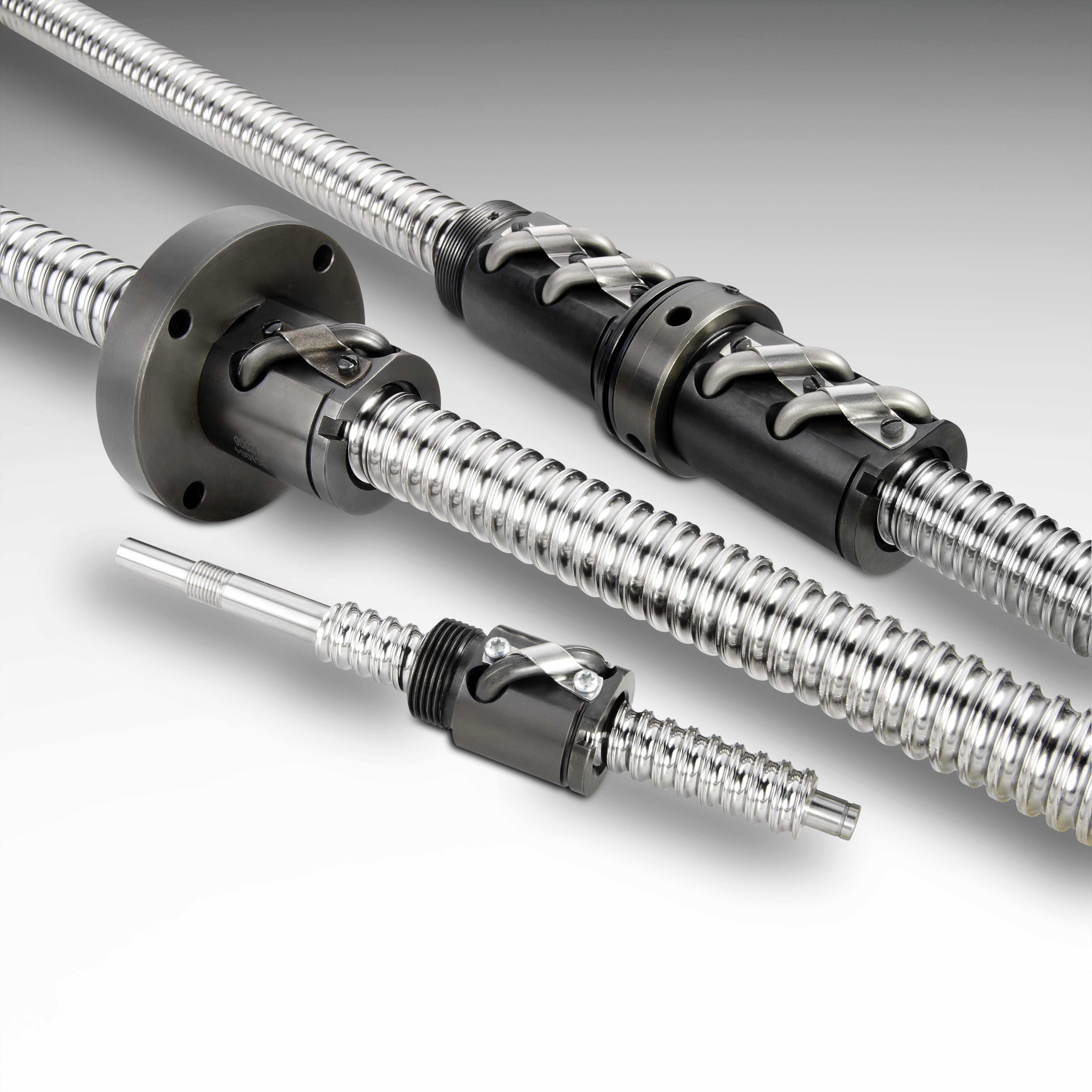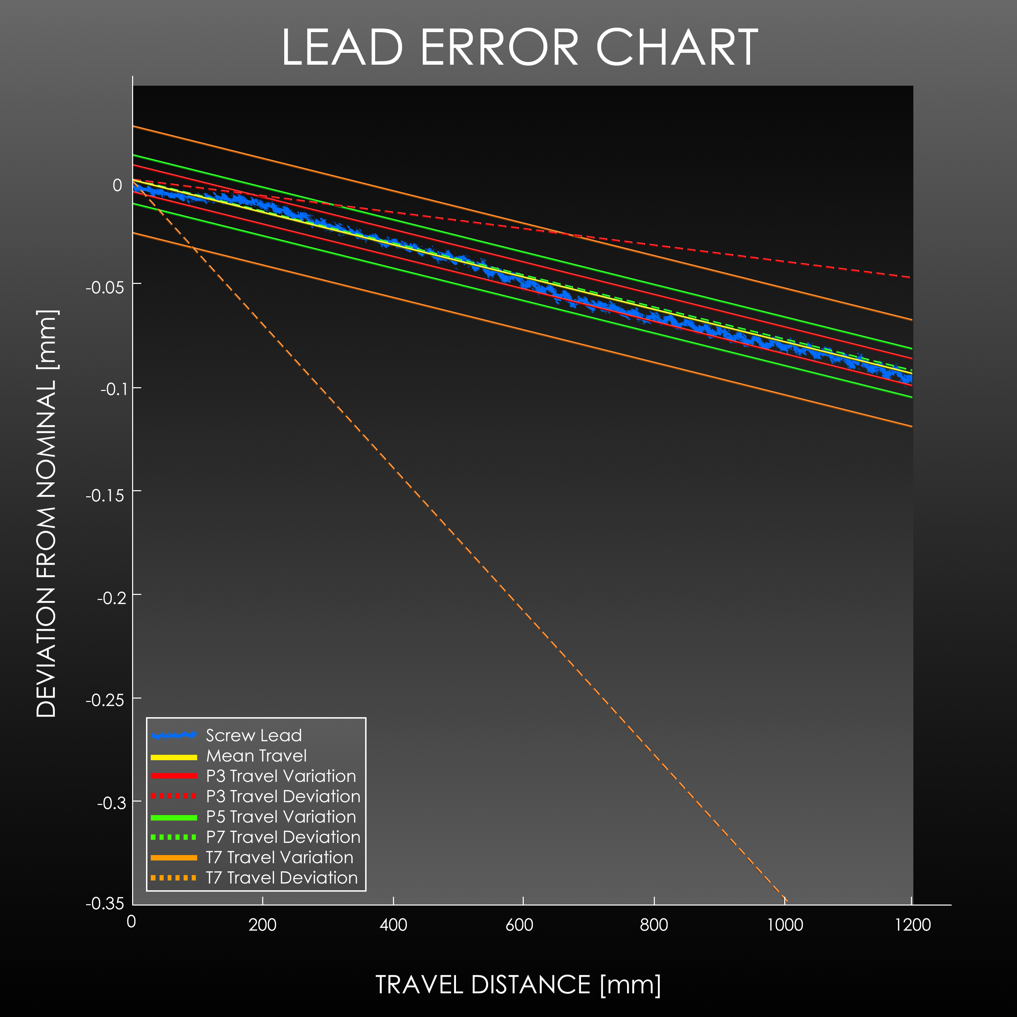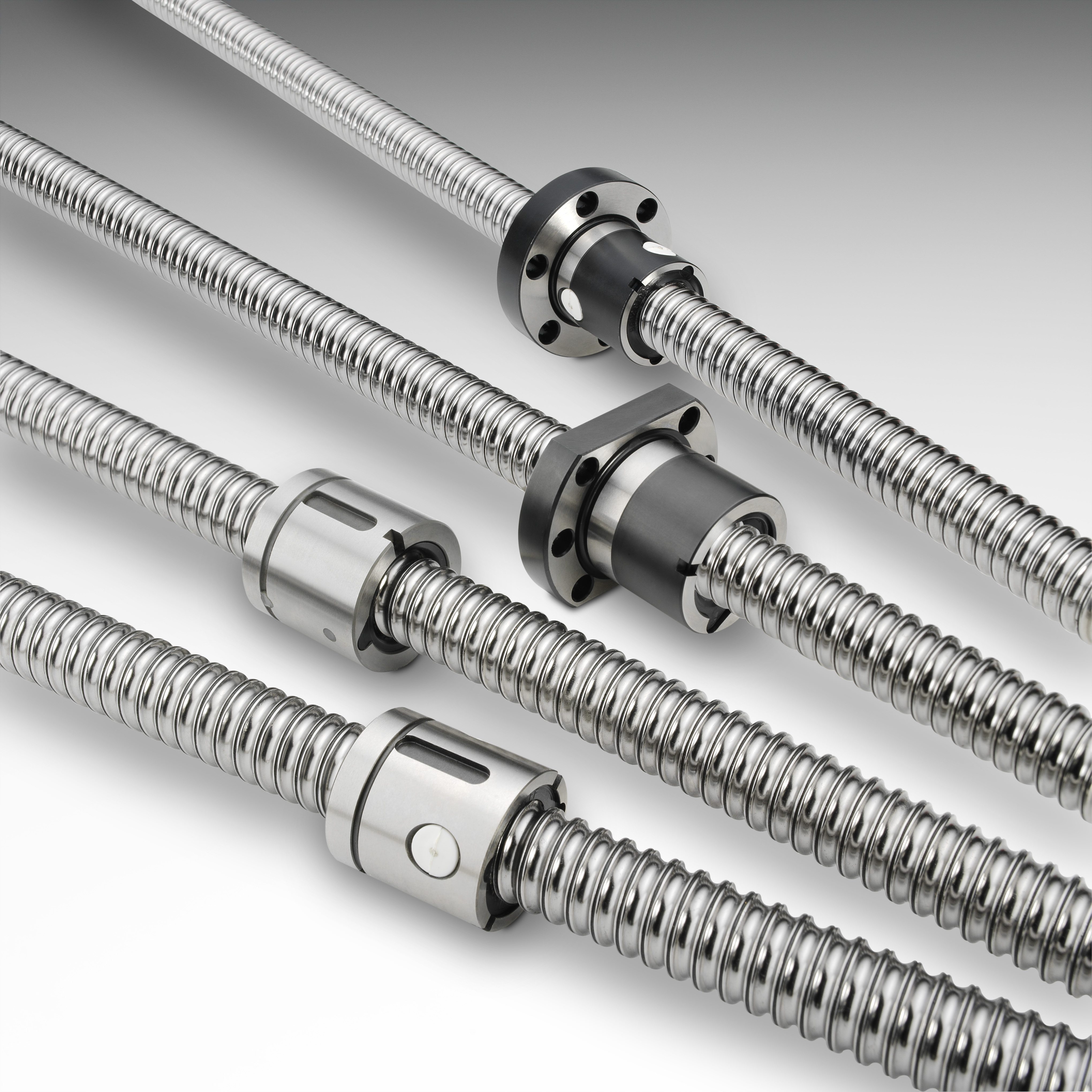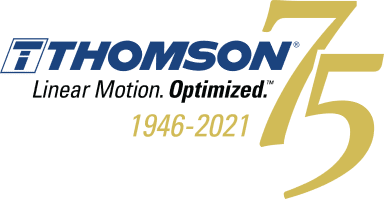Defining the question
Because ball screws are available in both inch and metric dimensions, designers sometimes begin the specification process by selecting a product family based on the unit of measure. This decision may prematurely exclude the ideal product for the application and lead to significant losses in time, labor and expense. This article explains how sizing and selection questions centered on performance – instead of monikers – can lead to more efficient linear motion designs.
The lead of a ball screw is the linear travel that a ball nut will travel upon a single revolution of the screw. The unit of measure used to define this motion is then typically assigned to the ball nut as the product series. A 1.000 inch lead on an inch-series ball screw means that the load, as attached to a nut, will travel 1.000 inch with each revolution of the screw. Similarly, a ball screw with a 25.000 mm lead would mean that one revolution of the screw translates the load 25.000 mm. From a functional standpoint, regardless of whether the lead is specified in inches or millimeters, both screws translate the load in exactly the same way. Everything else being equal, the unit of measurement is little more than a parameter menu option on a motion configuration screen and, therefore, does little to actually differentiate the product

Inch series ball nuts provide dependable accuracy and repeatability, and are ideal for assemblies designed for inexpensive, transport-grade applications.
Inch series ball nuts and metric series ball nuts have traditional differences in performance and configuration that are much more important than the lead. Both are excellent products for the applications they were designed to solve. Inch series assemblies were designed as the work horses for low-cost, transport-grade applications: “I need to move a large load from Point A to Point B efficiently and cost effectively.” Metric series assemblies have evolved as the precision solution: “I need to move a large load efficiently while maintaining precise location throughout the stroke.” Therefore, the question shouldn’t be “inch or metric?” but “transport or precision?”
The correct answer
Positional accuracy is a much more valuable metric, and there are two classifications (Transport or Precision) with multiple grades (P0, P3, P5, T5 and T7 to name a few). Applications that require simply translating a load from one point to another use the lower accuracy classification known as “transport grade” (typically ±23µm / 300 mm or higher). Applications requiring knowledge of the absolute position of that load at every point in the stroke without external feedback use the higher “precision grade” accuracy (typically ±23µm / 300 mm or lower). The accuracy designation doesn’t just provide a numerical deviation but also defines the overall accumulation of positional error. Transport grade error is cumulative and linear, whereas precision grade error is controlled and constrained.

This graph illustrates the typical output from dynamic lead analysis.
Ball screws were invented and popularized in the U.S. for the automotive industry. Therefore, the product series has maintained the key features critical to this application: low cost, high performance (efficiency, load capacity and life expectancy), and a positional accuracy that is not critical. The metric series of ball screws was initially developed for machine tool applications that required a product that was accurate, repeatable and stiff. The positional accuracy of each series is still the main defining point of differentiation between the products today, although it is certainly possible to produce a product that crosses or overlaps the value proposition (i.e. an inch series assembly with precision accuracy or a metric series assembly with transport accuracy). Thomson continues to supply and support both series of products as we have embraced the differences and understand that each product solves a unique application.
Why select transport grade ball screws?
When design engineers are selecting ball screws, the performance and price gap between a transport grade and a precision grade ball screw assembly is marginal, making the final product selection even more challenging. The transport grade solution can still offer some capability advantages when selected for the proper application.
Besides lead accuracy, transport grade assemblies typically use external ball return systems to recirculate the ball bearings, making it easy to visually identify this product. External return systems tend to be noisier, less smooth and consume more space than internal recirculation systems. However, they are less expensive to manufacturer and enable the use of more ball bearings, increasing their load-bearing capacity or life expectancy. For those applications in which cost, load bearing or life expectancy are critical factors, designers should seek out manufacturers who specialize in transport grade products.

Metric series ball nuts provide quiet, smooth-running and efficient performance with superior precision.
Why select precision grade ball screws?
When accuracy and repeatability are critical to the performance of a system, it is important to select the correct product to yield the desired results. Precision grade assemblies tend to be quieter, smoother and have a smaller installed profile than transport grade assemblies. Therefore, this product is ideal for accuracy critical applications or where customers demand a higher level of operating performance. High-accuracy screws with a preloaded ball nut can eliminate the need for a positional feedback system, which can reduce the overall system cost.
How measurement scales define product lifecycles
Another point of differentiation between inch and metric series products is in how each scale describes the dynamic capacity – or life – of the screw. Inch series products describe life in terms of millions of inches of linear travel, whereas the metric series defines life in terms of millions of revolutions. An inch series ball screw having a 2000N dynamic capacity, for example, means that it would carry a 2000N load for 1 million inches before it reaches its estimated L10 end of life. Likewise, a metric product with a 2000N dynamic capacity means that it would carry a 2000N load for one million revolutions to reach the L10 life expectancy. Because the metric series has the screw lead in the equation, the dynamic capacity cannot be directly compared and used as a point of differentiation unless converted to similar units.
What to specify
The most important question to ask yourself when specifying ball screw accuracy is whether you need a transport or precision grade solution. Consideration of the differences between the product series are secondary considerations only and may then be used to sway the final product selection.
Both inch and metric series ball screws are excellent products if used in the correct application. As with any business decision, it is important to analyze the tradeoff of performance and cost when making the final product selection. Select a transport grade ball screw for applications that require a transport grade screw. Select a precision grade ball screw for applications that require a precision grade screw. Don’t let product monikers sway the decision when only performance parameters are important. Start the ball screw selection process by creating a performance specification based on important parameters such as load, speed and life. The correct product may then be an inch or metric series ball screw.


